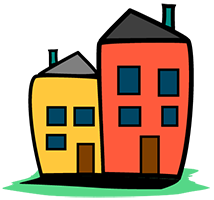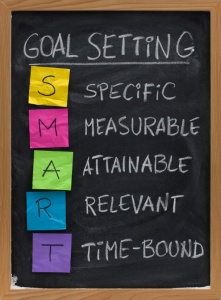An important step in making your home usable is setting a goal. If you set a goal you are more likely to succeed in that goal. The best goals are SMART. Take a few minutes to review what makes a goal SMART. At the end of this section, you can set a SMART home usability goal based on the home usability need you identified in the previous section.
Smart goals are: specific, measurable, attainable, realistic and time-bound
(S) Specific – A specific goal states exactly what needs to change. “Change my door knob to a lever” is a specific goal. “Make it easier to get into my apartment” is less specific.
(M) Measurable – A goal is measurable if you can count it. “Add some light” to my kitchen is not a measurable as “Change my light bulb to a 100 watt equivalent bulb.”
(A) Attainable – A goal is attainable if you can achieve it.
(R) Relevant/Realistic – To be relevant and realistic a goal must both be important to you and possible to achieve given the time and resources you are willing to put toward it.
(T) Time Bound and Tangible – A goal is time bound if you put it in a specific time frame, like “by May 1st”. Saying, someday I’ll reach my goal is less effective. When your goal is tangible you have a better chance of making it specific and measurable and thus attainable.
SMART goal examples:
- In the next three weeks, I will install lever handles on my bathroom sink.
- Within the next month, I will get a grab bar installed in my shower.
- In the next 3 months I will get estimates from 2 contractors and hire one to install a ramp at my front door.
Extra goal setting tips:
- Forming a goal statement following the SMART strategies will help you to create a plan for reaching your goal
- Be prepared for set backs. Remember complicated difficult goals may have delayed or extended timelines. Don’t get discouraged.
- Some of the most difficult accomplishments may actually seem easy because they are important.

